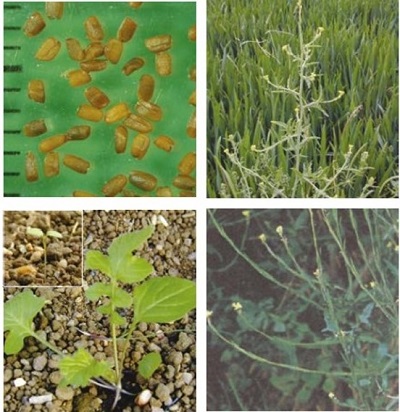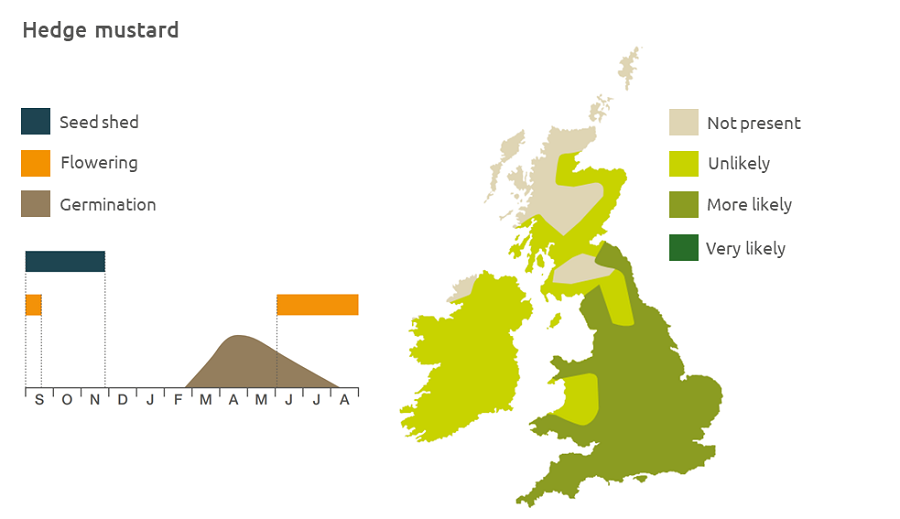- Home
- Knowledge library
- Distribution and biology of hedge mustard in the UK
Distribution and biology of hedge mustard in the UK
Hedge mustard is a broad-leaved weed that is poorly competitive in winter cereals. Find out how to identify and control it.
Overview
Hedge mustard (Sisymbrium officinale) appears in spring-sown crops and poorly competitive winter cereals. The flowers are pollinated by insects. Hedge mustard reproduces only by seed, which is wind-dispersed.
- It has value to biodiversity
Description
It is an annual or over-wintering annual, 30–60 cm tall, with almost horizontal branching stems and deeply cut spear-shaped and lobed leaves. The yellow flowers are very small with four petals, in flat-topped flowerheads.
Key features
Plant: It is a much-branched mustard-type plant. The branches are usually parallel to the ground.

Location and life cycle

Geographic distribution
Hedge mustard occurs in cultivated ground, hedgerows and waste ground, including field margins, in lowland areas up to an altitude of 350 m.
Soil type
It likes dry, loose, nutrient-rich loams and sandy and stony soils.
Seed statistics
- Germination depth: 5 cm
- Seed weight: 0.14 mg
- Seeds/head: 9–18
- Seeds/plant: 2,700
Management
A stale seed-bed approach may be used to control this species.
For advice on herbicides, please speak with your agronomist or adviser.
When was this information last updated?
This page is based on content from the encyclopaedia of arable weeds publication. Since it was first released in 2008, the publication has been redesigned several times but not revised. However, it remains a good foundation for general information on the distribution and biology of weeds.

